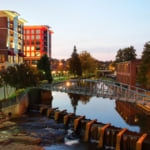Name: Aqaba Castle
Official/Related Website URL: https://bit.ly/2l8AcTw
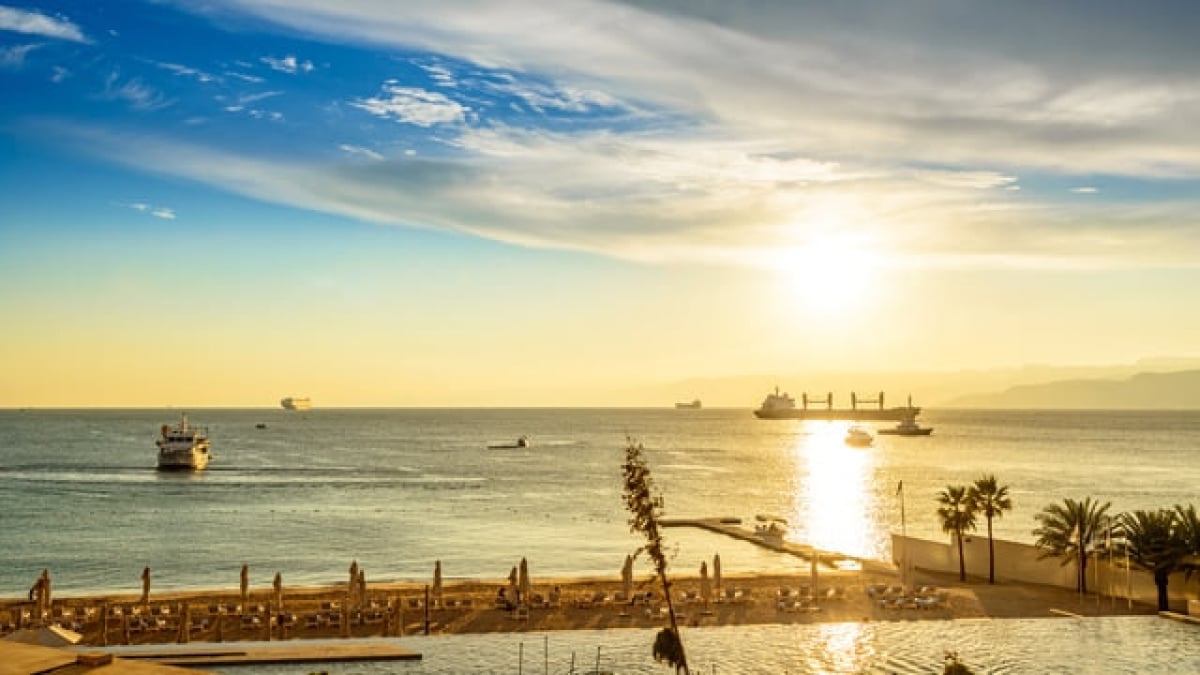
The Only Seaside Gateway in Jordan! 4 Must-Visit Tourist Spots in Aqaba, the Gateway to the Red Sea
The Gulf of Aqaba, which connects to the Red Sea, is the only coastal area in Jordan, with Aqaba being the country’s sole port city. Although Jordan's coastline is relatively short, Aqaba has played a significant role in history, dating back to the 4th century BC. It has been valued by various rulers, including the Egyptian dynasties, the Kingdom of Israel, the Roman Empire, and the Islamic caliphates. Given its proximity to Israel, some travelers might assume that visiting Aqaba is complicated, but that’s not the case! The coastal areas of Jordan, Israel, and Egypt along the Gulf of Aqaba have been actively developed as resort destinations, attracting international tourists. Aqaba itself sees many visitors from Israel as well. If you're planning a trip to Jordan’s premier beach resort city, here are four must-visit attractions in Aqaba!
table of contents
[x] close
The Only Seaside Gateway in Jordan! 4 Must-Visit Tourist Spots in Aqaba, the Gateway to the Red Sea
1. Aqaba Castle
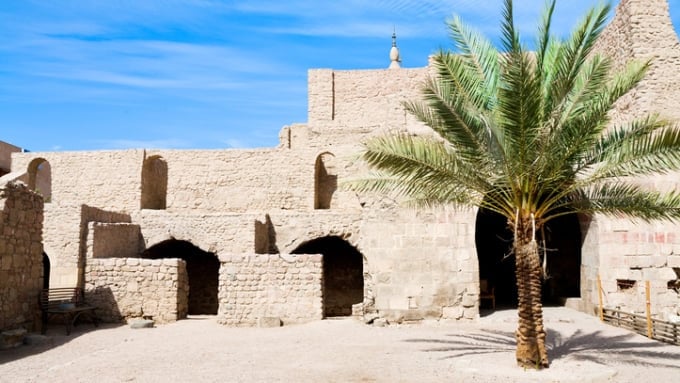
Aqaba has long been a crucial gateway between the Arab world and the open seas. To protect its strategic port, the Crusaders built Aqaba Castle in the 12th century. However, in 1187, the legendary Muslim leader Saladin, founder of the Ayyubid dynasty, seized and destroyed it.
In the early 16th century, Ashraf Qansuh al-Ghawri, the Mamluk Sultan, rebuilt the fortress. However, the Mamluk Sultanate soon fell to the Ottoman Empire, leaving the castle largely abandoned for centuries. It wasn’t until World War I that Aqaba Castle played a crucial role again—this time as a stronghold for the Arab Revolt, led by Lawrence of Arabia and Arab forces fighting against the Ottoman rule.
Aqaba Castle remains one of the city's top historical landmarks, deeply connected to Arab history. The fortress largely retains its 16th-century Mamluk design, offering visitors an authentic glimpse into medieval Arabian architecture.
2. Arab Revolt Flag
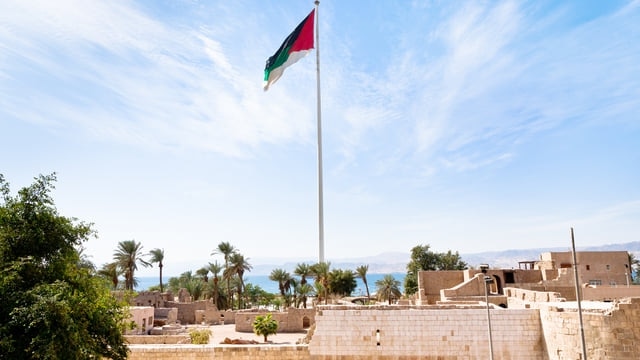
If you look towards the coastline from Aqaba Castle, you'll see an enormous flag waving atop a towering pole. This is the Arab Revolt Flagpole, not Jordan’s national flag but a historic symbol of the 1917 Arab Revolt, led by Sharif Hussein ibn Ali of the Hashemite family, who fought for independence from the Ottoman Empire.
As mentioned earlier, Hussein, with the help of Lawrence of Arabia, captured Aqaba and used it as a strategic base for the revolt. This event marked the beginning of modern Arab nations, and to this day, the Hashemite family continues to rule Jordan.
More than just a flag, the Arab Revolt Flag is a powerful representation of Jordanian pride and identity. The flagpole stands in a large seaside plaza, a popular gathering spot for locals and tourists alike. Facing west, it offers a spectacular view of the sunset over the Red Sea.
Name: Arab Revolt Flag
Official/Related Website URL: http://www.aqaba.jo/Pages/Details/Attraction?AttractionID=4
3. Ruins of Ayla

In ancient times, Aqaba was known as Berenice during the Egyptian dynasties and Ayla (Aelana) under the Roman Empire. For centuries, little was known about the city's ancient layout. However, archaeological excavations near Aqaba’s pier have uncovered the remains of a city from the 7th century.
Ayla, like a typical Roman city, was enclosed by U-shaped walls and fortified towers. The area was systematically divided in a grid-like pattern, with evidence of churches within the ruins, making it a rare and significant archaeological site in the Arab world. Informative signboards are placed throughout the site, allowing visitors to explore and learn at a leisurely pace.
Name: Ruins of Ayla
Official/Related Website: http://www.your-guide-to-aqaba-jordan.com/ayla.html
4. Eilat

Aqaba, Jordan, and Eilat, Israel, are neighboring resort cities situated along the Red Sea’s Aqaba Gulf. While there are only three official land border crossings between Jordan and Israel, one of them is conveniently located just outside Aqaba.
For short visits, it depends on where you are from but travelers do not need a visa to cross between Aqaba and Eilat. If you’re curious, take a short trip to explore Eilat. However, be mindful of differences in currency and costs—foreign exchange services are available at the border gate. From Eilat’s coastline, you can enjoy a stunning view of Aqaba across the bay, where the massive "Flag of the Great Arab Revolt" waves prominently.
Name: Eilat
Official/Related Website: http://eilat.city/en
◎ Summary
We introduced four must-visit tourist spots in Aqaba, the only port city in Jordan. The Gulf of Aqaba is also home to Taba, an Egyptian resort town known for its relaxing atmosphere. Ferries operate between Aqaba and Taba, allowing travelers to explore three countries—Jordan, Israel, and Egypt—on a single trip. The climate in and around Aqaba is dry with little rainfall, but summers can be extremely hot, so visitors should take precautions when traveling.
RELATED ARTICLES
REGIONS
CATEGORIES
FEATURED ON Guide
-

Where will you go for the summer vacation? Introducing recommended spots for domestic travel
-

Kaizu City’s Recommended 7 Tourist Spots. Enjoy the Culture and History Nurtured by Wajū!
-

What Makes Ashikaga Flower Park So Special? A Treasure Trove of Photo-Worthy Spots!
-
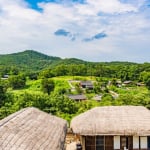
600 Years of Radiant Tradition: Korea’s Historic Villages of Hahoe and Yangdong
-

Two-Colored Seas and a Pink Beach! 4 Must-Visit Spots in North Eleuthera
MOST POPULAR ON Guide
-
 1
1Doha: Must-see Attractions in the Capital of Qatar
-
 2
2Toronto: 10 Things to do in this Picturesque Canadian City
-
 3
3Amarillo: A City Famous for It’s Amazing Canyons, Great History and Music
-
 4
4South Korea: Dazzling Scenery, Rich Culture and Fascinating History
-
 5
5Kuwait: A Country in Middle East Asia Famous for Hot Sand Dunes and Stunning Cityscape



